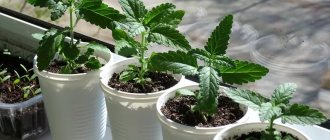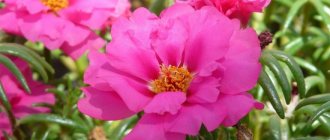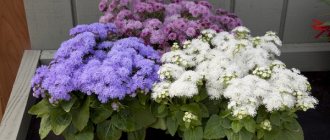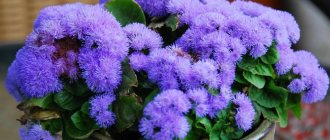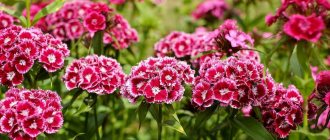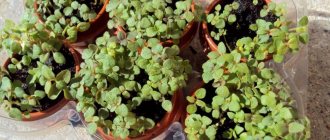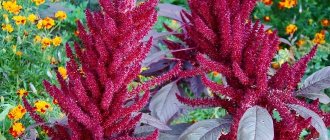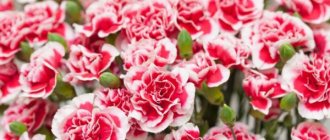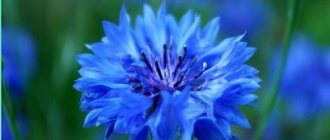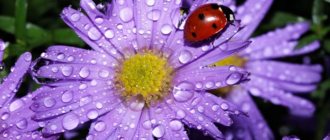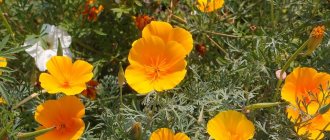Despite the rather complex name of the flower, pelargonium is very famous and popular among experienced gardeners. It is suitable for those who want to have flowering plants in their room. This culture has another name - geranium. Although not everyone likes the aroma of this flower, its appearance can attract any admirer of indoor plants.
Pelargonium (lat. Pelargonium) is a flowering plant from the genus Geranium. Essential oil from Geranium is used to create perfumes and soaps, as well as to purify the air from pathogenic bacteria.
When is the best time to sow seeds?
Gardeners and people who keep indoor plants in their homes are of the opinion that pelargonium grown from a seed has an increased lifespan compared to a bush obtained by another propagation method.
But when it comes to choosing the right time for sowing seeds, flower growers disagree significantly . Some argue that the best planting period will be from the first days of November to the end of April, while others believe that good sowing occurs in December. Still others are of the opinion that the best period will be the beginning of spring.
After the appearance of young shoots, Pelargonium is planted in individual containers, deepening the seedlings by 2-3 cm.
When to sow in regions
In central Russia, lovers of indoor plants believe that it is necessary to sow the crop no later than February, or at the end of March. At the beginning of spring there is enough sun, so additional lighting is not required. But in the northern regions, without special care, the seeds may die before they have time to sprout. And they sow here closer to April.
Sowing dates according to the lunar calendar for 2020
People who use the lunar calendar to select planting dates are well aware that the phases of the moon change with constant regularity. Therefore, it is better to use a new calendar every year. This will help organize timely care for pelargonium.
The flower is often planted in January - March, but you should not sow seeds on these dates:
Planting pelargonium seedlings in flower beds and containers
First autumn sowing of geraniums
It so happened in the end that we only had two seedlings left from the first sowing. We could have saved more, but we didn't bother too much. These two seedlings were planted in small pots in March. They bloomed in July, but not very much. These plants are still blooming, but they have practically not increased in growth or beauty.
1 photo taken on March 9 - transplanting into pots, 2 photos - June 7, 3 photos - July 18 - first flowering of pelargonium variety Apple Blossom
Second and third sowings of pelargonium
On the second May holidays, young geraniums were planted at the dacha: some got a flower garden, some got beautiful pots, and some got an old red bucket that no one needed). There were a lot of seedlings and space was also required.
Caring for them was simple: when planting, complex mineral fertilizer was added to the holes and it was added during the summer. Watering as needed, fertilizing as we remember... And in July we have a lot of blooming geraniums of all colors and shades. This geranium is still blooming to this day, even while the one that has not yet been taken from the dacha. Autumn is warm...
Decoration of the site with pelargoniums from Olga Petina and Yuri Petina), August 22
What do the seeds look like?
Before sowing pelargonium seeds, it is necessary to carefully select them. The color of the grains should be brown, their shape resembles an elongated oval, and they have elongated depressions on the sides. The shell is somewhat similar in density and external features to leather and has a matte color. On average, a pelargonium seed is large in size, but depends on the species.
Grains that are deformed and small in size cannot be used for sowing.
You can collect the seeds yourself - after flowering, the plant forms a seed capsule.
Seed requirements
In order for pelargonium seedlings to sprout and develop successfully, it is necessary to select high-quality planting material. The seeds should be brown, oblong in shape and always hard. Other options for seeding material can either produce low-quality seedlings, or even leave the grower without a “harvest.” To avoid such troubles, you should not buy seeds at the market or in supermarkets. For this purpose, it is better to visit a specialized store, the quality of the goods in which will be guaranteed to be high. Good seeds are sold ready for sowing, so you don’t have to do any complicated manipulations to get them to germinate.
Geranium seeds
Also, when choosing planting material, pay attention not only to the beauty, shape and richness of the shade of the buds, but also to the maintenance conditions that the flower will need to provide for healthy growth and full flowering. If creating the appropriate conditions necessary for growing the selected type of geranium from seeds at home seems too difficult to you, it is better to opt for another variety of pelargonium.
Subtleties of planting seedlings
It is better to sow several seeds at once to increase the likelihood of good germination, so pelargonium seedlings will be guaranteed to be obtained. In the case of planting seeds in one box, it is necessary to monitor the sprouts, their size and how many centimeters the interval between them is maintained.
As soon as the first leaves of the flower appear, you need to transfer the sprouts to individual containers so that after transplanting to the site the root system of the plant is not damaged.
Preparation of material for planting
Working with seeds, despite the labor-intensive process, is quite an exciting activity for a gardener. If you decide to grow pelargonium, then all the features will consist of tilling the soil and preparing the container. Seeds should be disinfected with special compounds or a weak concentration of potassium permanganate solution.
Before sowing, it is recommended to do the following:
- Sort the seeds, removing small and damaged ones. The ripeness and usefulness of grain can be determined by its elongated shape. There should be no stains.
- It is necessary to remove the outer shell of the seed, but try not to damage its core, and it is better to use a nail file.
- Treat with a disinfectant to improve seed swelling. 2-3 hours after treatment, fungi and spores will disappear.
Soil preparation
Pelargonium is suitable for both soil from the store and soil prepared from the garden. You need to add one part of sand and peat to the ground. After mixing the soil until smooth, it must be placed in the oven for roasting to eliminate bacteria and infections. How to select and prepare soil for seedlings
Selecting a container for seeds
For pelargoniums you need a container with holes for drainage. Plastic glasses or thick food boxes are suitable for this, and holes can be made with an awl.
Before filling the soil, you need to treat the container with potassium permanganate to eliminate harmful bacteria, and it is advisable to fill the soil after 2 weeks.
To sow Pelargonium seeds, you can use peat tablets, followed by planting the grown seedlings in pots
Sowing process
When sowing pelargonium seeds, the following actions should be taken:
- Place drainage at the bottom of the container, then soil, intensively moistening it.
- Place the seeds at a distance of 3-5 centimeters from each other if the container is large, if smaller, then place 2-3 seedlings.
- Gently press your finger into the soil and sprinkle the seedling with soil at a distance of 1 centimeter.
- Moisten the soil using a spray bottle.
- Stretch the covering material and send it to a warm place. At a temperature not lower than 22 degrees, but not exceeding 24.
- When sprouts appear, remove the cover and move the container to the light.
Pelargonium seeds sown in peat tablets require daily ventilation and spraying.
Necessary conditions for cultivation
If an adult pelargonium is not very demanding on living conditions, then this cannot be said about a small one. She needs a constant temperature of at least +22 °C and daylight hours of at least 14–16 hours. To ensure these conditions, pots with seedlings are placed on a southern or southwestern windowsill.
On especially sunny days, plants need to be shaded so that the delicate leaves do not get burned.
The humidity in the room should be moderate. Indoor geranium tolerates dry air more easily, while excessively humid air has a bad effect on the leaves and the general condition of the plant. In summer, young bushes feel comfortable on balconies and verandas, where there is a lot of light and warmth. For more lush and prolonged flowering in the summer, they can be planted in open ground.
Disinfection and soaking of seeds
Before growing pelargonium at home, you need to properly prepare the seed. It is necessary to partially remove the seed shells to speed up the growing process. To avoid damaging the seed too much, it is better to use sandpaper. Clean only the top layer with it.
As a disinfectant for seeds, a weak concentration of potassium permanganate solution or peroxide is used. After disinfection, it is necessary to soak them in water at room temperature so that they swell for 2 hours.
Varieties and hybrids of pelargonium for home cultivation
For home cultivation from the group of zonal pelargoniums, the following varieties and hybrids are recommended:
White Butterfly, Dwarf Nano Violet, Pelargonium Pavel f1, Southern Night, Moulin Rouge, Pink, Chandelier Bicolor, Blanca Grandiflora Mix, Colorama, Chandelier Scarlet and others.
If there are allergy sufferers in the family, then it is better not to grow varieties and hybrids from the group of fragrant pelargoniums indoors. In families that do not respond to the aroma of flowering pelargonium, the following standard (species) varieties can be grown, which have become the basis for breeding cultivars:
Pelargonium capitata, Lady Plymouth, Lime citrus. Tomentosum Pelargonium pink; Pelargonium tomentosa; Pelargonium curly; Pelargonium oakleaf.
Royal pelargonium varieties are beautiful in the interior of an apartment. Large flowers collected in inflorescences create a special coziness:
Sally Munro, Mandarin, Candy Flowers Bright Red, Mona Lisa, Chocolate, Black Prince, White Gloria and others.
Even a short list of varieties and cultivars for home cultivation given in the article shows how endlessly rich the world of pelargonium is. Anyone who wants to take up these old-fashioned, beautifully flowering plants will definitely find their “flower of happiness” and grow their favorite cultivar from seeds.
Methods for sowing pelargonium at home
Pelargonium seeds can be sown in any shallow container. Most suitable:
- plastic containers;
- peat tablets or cups;
- toilet paper.
Planting seeds and caring for them at home is best done in strict order.
Planting seeds in a container
Sowing can be carried out in special trays with a depth of at least 30-40 cm. Prepared containers must be filled with soil and watered with warm water. The soil must have a temperature of at least +20 ° C.
We sow the seeds at a distance of 2 cm one after another. And it's better not to fertilize them too much. Seeds must be planted in a shallow hole and covered with soil on top, watered after planting.
It is recommended to cover the plantings with film or transparent glass to create conditions close to greenhouse ones.
Sowing Pelargonium seeds in containers
Planting seeds in peat tablets
In addition to soil, pelargonium seeds can be germinated in soil with peat. Peat tablets are ideal for them. They are selected according to their acidity level. Be sure to water before planting.
Sowing of seeds is carried out in holes of shallow depth, covered with polyethylene or glass. It is necessary to carry out ventilation and spraying every day.
Pelargonium seeds sown in peat tablets require daily ventilation and spraying.
Using toilet paper for planting
Germinating seeds using toilet paper can be called the simplest and most effective sowing method. The pre-treated grains are laid out on soaked toilet paper and placed in a container. Cover the top with a lid. As soon as the first shoots appear, the seedlings are carefully transplanted into the ground.
Germinating Pelargonium seeds in toilet paper
How to grow a crop from seeds: step-by-step instructions
Planting pelargonium with seeds is considered the best method. The grown seedlings are unpretentious, resistant to diseases and are characterized by abundant flowering.
Not all types of pelargonium reproduce well by seeds. In this way you can grow zonal geranium.
Ampelous pelargonium is very beautiful, but capricious when propagated from seeds. Even experienced gardeners prefer to propagate it by cuttings.
When to sow?
Some gardeners advise growing pelargonium from seeds from November to April, others in December-January, and still others only in spring. Everyone is right, since it can be planted at any time. In central Russia, February-March is considered the best time. By the time of germination and the beginning of growth, the length of daylight hours increases. When sowing earlier, additional lighting is required.
Information: 5-6 months pass from sowing seeds to flowering.
Preparing soil and material for sowing
Before sowing, it is necessary to prepare the seeds. For faster germination, a scarification procedure is carried out, that is, using fine sandpaper or a nail file, the hard shell is slightly destroyed
You need to do this carefully, remove only the top layer and try not to damage the seed itself. If this procedure is neglected, seedlings may appear only after 2-3 months. After scarification, the seeds are soaked for 10 minutes in a solution with zircon or epin
To prevent various diseases, you need to keep the seeds in a weak solution of potassium permanganate or ordinary hydrogen peroxide for 20 minutes.
After scarification, the seeds are soaked for 10 minutes in a solution with zircon or epin. To prevent various diseases, it is necessary to keep the seeds in a weak solution of potassium permanganate or ordinary hydrogen peroxide for 20 minutes.
Disinfected seeds are poured with water at room temperature for three hours to swell. It is recommended to disinfect the soil before planting. You can place it in a preheated oven for five minutes or pour hot water with potassium permanganate. You can also use commercial biofungicides.
How to plant?
Dishes for sowing can be plastic containers or individual cups. They are also disinfected with a solution of potassium permanganate. Holes are made at the bottom, drainage is poured and prepared soil is poured on top. Water with water or root solution.
In a large container, the seeds are planted at a distance of 5 cm from each other, 6-7 cm are left between the rows so as not to damage the roots when diving. One seed is planted in cups. The seeds are deepened by about 50 mm and sprinkled with a thin layer of earth or sand. You can simply deepen the seed a little with a match.
It is convenient to grow seedlings using small volume peat tablets. In this case, the root system is not injured when transplanting into a pot. The tablets are placed in a container and filled with warm water, and they increase in size by about 6 times. The seeds are placed in special recesses and lightly sprinkled with peat from the tablet.
Before germination, the crops are covered with film or glass and placed in a bright, warm place. Most varieties of pelargonium germinate 7 days after sowing.
Seeds of ivy-leaved pelargonium do not sprout for 2-3 months. It is necessary to remember this and continue to care for the crops.
Detailed instructions for sowing pelargonium can be seen in this video:
Choosing a pot for planting
After the first two leaves appear, the seedlings are picked. To do this, you need to select narrow and tall pots. It is recommended to use pots with a diameter of about 10 cm. It is advisable to use clay pots that allow air to pass through well.
Indoor pelargoniums do not like large pots. They will not begin to bloom until their roots fill the entire earthen ball.
Choosing soil for growing plants
Pelargonium is planted in loose, medium-density soil. You can buy a special mixture for geraniums in the store, or you can prepare it yourself. The following options are recommended:
- Peat, sand and turf in proportions 1:1:2.
- Peat, perlite in a 1:1 ratio.
- Peat, sand in a 1:1 ratio.
Proper care of seedlings
A well-executed planting procedure is part of successful care of pelargonium seedlings. It is better to grow seedlings in favorable conditions.
Seedlings need:
- timely watering;
- correct temperature setting;
- good feeding.
Watering the seeds
The amount and frequency of watering seeds depends greatly on the time of year. In hot summers, it is better to water every 3 days, and in winter they moisten once a week. Before watering, it is necessary to place a thick layer of drainage under the bottom of the container, since pelargonium does not tolerate strong excess moisture. The moistening itself is carried out as soon as the top layer of soil dries out.
Geranium grows well only with sufficient light, but direct sunlight should be avoided. For good development of pelargonium, daylight hours should be at least 15-16 hours.
Picking sprouts
As soon as the first sprouts of pelargonium appear, it is necessary to transplant and pick the seedlings into individual containers. The sprouts are buried at a distance of 2-3 centimeters. Transplanted into containers that are shallow in depth.
Pinching pelargonium
The sprouts should be pinched at about 6-8 leaves. But pinching should not be carried out during flowering and the formation of buds. Mature species of pelargonium are pruned in spring and autumn. Timely pruning of weak and damaged shoots allows you to obtain pelargonium of extraordinary beauty that can bloom longer.
Pinching pelargonium seedlings promotes better formation of lateral shoots and significantly more luxuriant flowering
External factors
Before growing pelargonium, it is necessary to create the right conditions. This culture grows well only in bright rooms, but the plant should not be kept in direct sunlight. The daylight hours of pelargonium should be at least 15-16 hours. In summer, it is recommended to take the plant out into the fresh air.
Since the leaves of pelargonium are covered with a special layer for protection, you should not spray them, otherwise moisture on the stem and leaves can lead to rotting of the flower.
Temperature changes are unacceptable for young shoots, otherwise they will be severely damaged. On average, the required air temperature for pelargonium should be no lower than 7 degrees, but not higher than 22.
Plant nutrition
The mixture for fertilizing pelargonium is selected taking into account its needs. The best options for feeding are those that contain the following substances:
- copper and zinc;
- manganese and phosphorus;
- boron, iron;
- calcium, nitrogen.
They use complexes of mineral substances, but before purchasing you need to read the composition.
Among the folk methods for feeding pelargonium, milk or ash infusions and iodine are used.
At the initial stage of growth of the stem, leaves and roots, it is necessary to add nitrogen to the fertilizer so that pelargonium grows faster and there is no fading in the flowers.
It is recommended to feed in this way at the beginning of spring, but you need to take precautions and dosages recommended by the instructions.
As soon as the first buds begin to bloom, it’s potassium’s turn. Since it is the main component for the appearance of flowers in pelargonium, phosphorus will stimulate the strength of its leaves and stems.
Iodine also serves as a stimulant for the formation of a large number of buds . Therefore, in addition to peroxide, iodine is added to the soil. Preparing the fertilizer is simple, and after 2-3 procedures the effect will be noticeable.
Step by step action:
- Before planting, the soil must be moistened.
- Prepare a solution consisting of 1 drop of iodine, 1 liter of water and 1 ml of peroxide.
- Pour along the walls of the container, avoiding contact with the trunk and leaves.
For one watering it is necessary to use no more than 50 grams of fertilizer, and repeat the procedure at intervals of 3-4 weeks. The work is carried out long before the abundant flowering of pelargonium. You should not use this fertilizer too often, so as not to burn the flower.
When to plant geraniums
There is no specific answer to this question. It all depends on the gardener’s desire and ability to provide the seedlings with the required amount of light. Geranium is not a particularly picky plant to grow.
Florists recommend sowing in spring or summer, when daylight hours approach their maximum. However, if you have special equipment with which you can provide the seedlings with the required amount of light, there will be no time restrictions for you. It will take 3-5 months for geraniums to grow to medium size.
Transplanting sprouts to a permanent place and further care
Pelargonium sprouts are transplanted into the ground in May. By that time, the culture will have time to develop, its root system and immunity will be strengthened. They are replanted using the transshipment method, having prepared the soil for the plant in advance.
The width and height of the hole should correspond to the container in which the pelargonium grew before transplantation. Within a week, it is necessary to water the hole abundantly and install drainage.
At the time of transplantation, you also need to water the ground so that the roots of the plant stretch out. You need to immediately loosen the soil.
In summer, pelargonium does not need special care, since weeds usually do not grow near it.
Pruning is necessary only for fading inflorescences and leaves, or for the formation of the bush itself. Feeding should be carried out if necessary, with the exception of regular watering and fluffing the flower.
Pelargonium will perfectly decorate not only flower beds in the garden, but also balconies
How to sow pelargonium (geranium) for fast maximum germination.
January is the best time to sow pelargonium or geranium.
, as this flower is called in the old fashioned way. Sowing is carried out so early in order to obtain flowering plants by summer for planting in open ground.
You can sow geraniums all year round, but if sown in summer, the plants will bloom only next year, and if sown in February or March, the beginning of flowering will be delayed by a month, respectively, it will begin in June and July.
Growing pelargonium from seeds is one of the ways to propagate this flower.
. Many people prefer to propagate geraniums by rooting cuttings, but by buying seeds you can get new varieties of flowers. Also, pelargonium is grown from seeds as an annual garden flower by those who do not have the opportunity to preserve flowers in winter until spring, so they are grown from seeds when sowing seedlings every year.
New plants obtained from seeds or through rooting cuttings always bloom more abundantly and longer than biennial plants
, so it is recommended to renew geraniums every year. From new varieties of geranium grown from seeds, you can collect seeds for sowing next year.
Despite the fact that pelargonium is an unpretentious plant and requires simple care, difficulties often arise when sowing seeds - seedlings appear for a long time, there are few or no seedlings
. The fact is that pelargonium seeds are enclosed in a dense hard shell; it must collapse in the soil so that the embryo begins to receive moisture to start the germination process.
Even if you buy high-quality seeds treated with special compounds, this is indicated by the color of the seeds, there is no guarantee that you will get quick and friendly shoots. Since there are very few seeds in a pack of rare varieties (3 to 5), we want to get maximum germination in a short time. Typically, manufacturers indicate on geranium seeds that the emergence of seedlings should be expected in 2-3 weeks.
How to sow pelargonium?
Pelargonium seeds are not too small, approximately 2-3 mm long with a dense brown shell.
In order for geranium seeds to germinate quickly, you need to scarify or carefully damage the outer shell of the seeds so that moisture and a solution can get inside, which will stimulate their germination
To carry out scarification you will need fine sandpaper. Place the seeds on the sandpaper, pressing lightly with your finger, drag each seed along the relief surface for 2-3 cm. After scarification, you can see lightened areas on the seeds; there is no need to do more damage or damage, so as not to damage the insides of the seeds.
After scarification of the seeds, we stimulate their germination by soaking
. To do this, simply immerse the seeds in warm water for 5-6 hours. You can use the stimulating drug “Zircon” to soak the seeds, 1 drop per half glass of water is enough and keep the seeds in this solution for 1-2 hours before sowing.
After two stages of preparing seeds for sowing - scarification and soaking, sow
. You can sow geranium seeds in a bowl or individually in small cups filled with loose, damp soil for seedlings. Pelargonium seeds should be buried no more than 5 mm into the soil when sowing. Crops need to be covered with film to retain moisture and placed in a warm place.
After complete preparation of the seeds, the first shoots of pelargonium began to appear within 2 days, 2 weeks earlier than stated.
Geranium seedlings need to be protected from “black leg”,
Sprinkling the surface of the earth with a thin layer of wood ash or crushed tablets of activated carbon.
Caring for geranium seedlings is as usual as for any flower seedlings.
The seedlings need maximum sunny lighting, moderate watering, and the soil in the pots should not be allowed to dry out or become waterlogged. Fertilize the seedlings after 2 weeks, using complex mineral fertilizer dissolved in water for irrigation according to the instructions. Replant growing bushes as they grow; a month to a month and a half after germination, the size of the cups should be doubled. The formation of pelargonium is done by pinching the tips of the shoots above the fourth or sixth leaf.
The article was useful - like it and subscribe to the channel!
Source
Ways to obtain and collect seed material
Before collecting seeds for planting yourself, it is necessary to pre-pollinate the pelargonium, using a brush to move pollen to each flower. After flowering, a seed box is formed on the pelargonium. And after it dries, you can remove the seeds.
Only ordinary pelargoniums are propagated using seeds, while other varieties require a different technique.
Propagation by cuttings
This method of propagation is considered the easiest to perform, fastest and most effective, and at the same time preserves the mother plant. The main key to a successful procedure is maintaining the required temperature and constant sanctification.
The advantage of this method is that cuttings can be collected several times a year. But in the period from November to January, the mother plant will be at rest, so the cuttings will not produce a strong bush.
In order for pelargonium to bloom this year, reproduction begins in March. This way the plant activates all its powers. And a flower planted in April will produce buds next year.
You can cut the plant in the fall, until about September-October, after pruning, and by summer the first flowers will appear. To properly separate cuttings from a plant, you must do the following:
- Pick up shoots from the top that have 3-4 leaves. The length of the cutting must be at least 7 cm.
- Cut the cuttings with sterile instruments, carrying out the operation with gloves so as not to cause infection on the cuts.
- Place the material in a shaded area for several hours to allow the cut area to heal.
- To prevent the cut from rotting, you need to sprinkle it with coal, or use Kornevin.
- Place the cuttings in water and wait for roots to form before planting in the ground.
- It is necessary to avoid overexposure in water and immediately plant it in disinfected and moistened soil.
- Cover the container with the shoots with a lid for protection and to create a greenhouse effect. But this procedure is best carried out if the plant is not very strong and healthy.
Plants must be provided with good conditions at a temperature of +22-23 degrees, and air humidity should not exceed 80%.
Pruning pelargonium cuttings. Reproduction by cuttings
Propagation by flower seeds
For many gardeners, this method of propagation is a real pleasure. Despite the fact that this is not the most popular method compared to cuttings, it also has its advantages.
For example, it can be used to develop an individual variety of pelargonium with unique properties.
This plant has excellent germination; young bushes grow quickly and unitedly. Plants grown by seed can bloom after 5-6 months.
Sowing seeds can be done all year round, but in winter it is necessary to monitor soil moisture and additional lighting. Therefore, the best decision for planting is spring and summer.
Pelargonium seeds are quite large and are planted quite simply . For seedlings, loose and light soil is used, with a minimum amount of nutrients so that the seedlings do not consume them in large quantities. It is better to make the soil for planting from garden soil and peat or sand; you can also add a small amount of humus if the soil is scarce.
Preparing seeds for sowing
If you purchased high-quality seeds from a well-known company, you will not need to carry out complex preparatory procedures. All you need in this case is to store the planting material in a dry, dark place, protected from insects and sunlight.
If the packaging with seeds indicates that the material is not prepared for planting, or you have some doubts about the quality of preparation, additional processing will be required. To do this, use phytohormones (“Epinom”, “Zirconom”), after which the seedlings are soaked in warm water for several hours. Carrying out such procedures helps accelerate seed germination and improves the quality of seedlings.
The most problematic for gardeners are seeds grown and collected at home. This will require a maximum range of activities. First, the material is cleared of the coarse top layer, which can slow down the germination process. To do this, the seeds are sanded using sandpaper. After this, they are treated with phytohormones (“Epin”, “Zircon”) and soaked in warm water for several hours.
Important! When using seeds obtained at home, the likelihood of obtaining high-quality seedlings is extremely low. The reason for this state of affairs is the loss of the gene transmitted by the mother plant by hybrid varieties of pelargonium during seed propagation.
